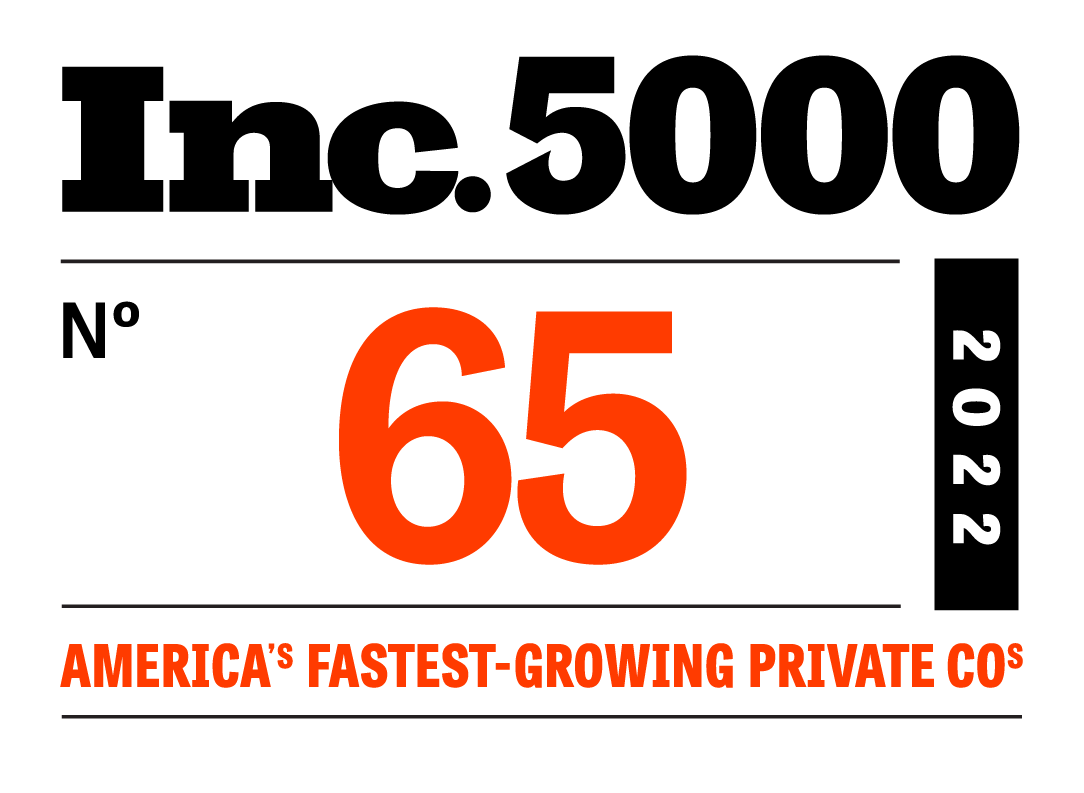-1200x640.jpg?width=1200&name=FAQ-Forgiveness-numerated(3)-1200x640.jpg)
Editor's Note: On Wednesday, June 3, The Senate passed the Paycheck Protection Program Flexibility Act. While you can read our coverage of the new legislation and how it affects PPP Forgiveness, here, this FAQ has also been updated to reflect the latest information coming out of Congress.
With the second round of Paycheck Protection Program loan funds being disbursed by banks and credit unions throughout the nation, the next piece of the puzzle for lenders will be forgiveness.
As outlined by the Coronavirus Aid, Relief, and Economic Security (CARES) Act, the PPP is set up to get Small Business Administration-guaranteed loans into the hands of small businesses, with the promise that upwards of 100 percent of the loans are eligible for forgiveness when the funds are appropriately used.
Financial institutions that have successfully worked through their PPP loan queues are now focused on this next hurdle presented from this economic relief package. To help, we’ve put together a brief roundup of the questions we’ve been most frequently asked by customers and curious bankers alike.
As with our PPP FAQ for Banks and Credit Unions, we’ll do our best to keep this resource updated as new information becomes available.
In the meantime, we encourage our readers to keep any eye on official sources of information as related to the PPP, including the following pages that we’ve relied upon ourselves.
Official Resources
- The CARES Act legislation
- Treasury Dep.: Guidance on CARES Act for Small Businesses
- Small Business Administration: PPP Guidance
Frequently Asked Questions by Banks and Credit Unions on PPP Loan Forgiveness
- What is Forgiveness?
Under the Coronavirus Aid, Relief, and Economic Security (CARES) Act, the Small Business Administration is authorized to forgive upwards of 100 percent of loans issued under the Paycheck Protection Program. Businesses do not have to pay back the forgive portion of the loan.
The percentage of the loan that is forgiven will be determined based on how the loans are used. In order to have 100 percent of the loans forgiven by the SBA, a borrower must use the funds for ear marked purposes—for example, for payroll, rent, and utilities—and fulfill their obligation to maintain staffing and payroll levels. The borrower will also be required to prove they met this criteria through documentation.
As of the time of writing, it’s known that a formal request will need to be made by the borrower, and documentation as outlined by the SBA will be required for forgiveness. - What qualifies a borrower for forgiveness?
Not every borrower will qualify for forgiveness. Those that do qualify must meet the following criteria:- Maintained staffing levels prior to the pandemic or rehired staff that was laid off in the beginning weeks of the pandemic by a Dec 31, 2020 deadline
- Did not reduce wages or salaries by more than 25 percent
- Used at least 60 percent of the PPP loan to cover qualifying payroll costs
- Only used funds to cover qualifying costs
- Is a borrower disqualified from forgiveness if they fail to bring back employees who decline to return to their old positions? I.e. The borrower attempted to use funds to rehire a furloughed employee, but that employee declines the offer and opts to remain unemployed.
No. In exercising their authority as outlined by the CARES Act, the SBA and Treasury Department plan on issuing a final rule which would exclude laid off employees, whom the borrower has attempted to rehire, from the loan forgiveness reduction calculation. According to the SBA:
The interim final rule will specify that, to qualify for this exception, the borrower must have made a good faith, written offer of rehire, and the employee’s rejection of that offer must be documented by the borrower. Employees and employers should be aware that employees who reject offers of re-employment may forfeit eligibility for continued unemployment compensation.
Further, new legislation passed by Congress—The Paycheck Protection Program Flexibility Act—extends the deadline employers have to hire back these workers from June 30 to Dec 31.
- What is the coverage period for forgiveness and when does it begin?
The SBA will forgive upwards of 100 percent of SBA loans for qualifying use cases over the course of an 8- or 24-week period, called the “covered period”, that starts once funds are disbursed to an approved borrower. Lenders are required to disburse loans within 10 days of SBA approval.
Another option for borrowers is the “Alternative Payroll Covered Period.” - What is the Alternative Payroll Covered Period and why would a business choose this over the “covered period”?
A borrower that wishes to have their coverage period coincide with their payroll schedule can elect to us the “Alternative Payroll Covered Period” when requesting forgiveness. If elected, this alternative coverage period will begin on the first day of the borrower’s first pay period following the date their PPP loan dollars were received. It will then end 56 days after and assumes employees are paid by the borrower, in full, on the last day of each pay period.
Borrowers that pay employees on a monthly schedule can qualify for the “Alternative Payroll Covered Period” by adjusting pay procedures to a biweekly basis.
Those using the “Alternative Payroll Covered Period” should be aware that this alternative coverage period should include employee healthcare, retirement contributions, and state and local payroll taxes—however, expenses such as mortgages, rent, interest on debt and utilities payments must be calculated using the “Covered Period.” - What costs qualify for forgiveness under the outlined coverage period?
How much of a business’s PPP loan is eligible for forgiveness is determined based on what they spent the funds on during the "covered period". The following qualifying costs are eligible for forgiveness:- Salary, wages, and similar compensation including housing stipends and other allowances that qualify as compensation
- Paid vacation, sick leave, parental leave, family leave, medical leave, and any other paid time off owed to employees
- Severance pay and other compensation owed to terminated employees
- Retirement benefits owed to employees
- State and local payroll taxes
- Rent and mortgage payments that existed prior to Feb. 15, 2020
- Interest owed on mortgages that existed prior to Feb. 15, 2020
- Utilities including phone, internet, water, gas, electricity, and transportation as related to your business
- What costs strictly do not qualify for forgiveness under the outlined coverage period?
Not every business cost is covered under PPP. For example, the following costs do not qualify for forgiveness:- Payments owed to independent contractors
- Employee compensation in excess of $100,000
- Federal payroll taxes as owed by the employer
- Specific sick and family leave benefits that are covered by a separate legislation—the Families First Coronavirus Response Act
- How is the application for forgiveness submitted?
It’s up to borrowers to apply for forgiveness, and so the process starts with them.
Under the new procedures, a borrower must request the forgiveness of PPP loan proceeds by filing SBA Form 3508, Paycheck Protection Program Loan Forgiveness Application. The application has four components: (1) the PPP Loan Forgiveness Calculation Form; (2) PPP Schedule A; (3) the PPP Schedule A Worksheet; and (4) an (optional) PPP Borrower Demographic Information Form. Borrowers are required to submit items (1) and (2) to their lender.
The banks, too, shoulder some responsibility, however that responsibility is limited compared to the borrower’s. In this regard, banks will be expected to validate that the proper documentation has, in fact, been provided—but it’s the borrower’s responsibility to attest to the document’s accuracy and truthfulness.
Once banks have all the documentation they will have 60 days to review and validate the documentation. From there they can submit the information to the SBA, and the bank will receive an approved amount for forgiveness. This portion of the PPP loan will then be canceled by the bank. - While a borrower can qualify for 100 percent forgiveness, not every cost will be eligible ... How do you calculate the percentage of a PPP loan that is eligible for forgiveness?
The SBA’s guidance provides for four broad categories of costs that are eligible for forgiveness: (1) payroll costs; (2) business mortgage interest payments; (3) business rent or lease payments; and (4) business utility payments.
Subject to some exceptions, forgiveness is generally available for costs incurred with respect to these items during the borrower’s “Covered Period,” which is the eight-week period that begins on the date the PPP loan was disbursed. As with prior guidance, the SBA requires that at least 75% of the forgiven amount be attributable to payroll costs. - What are some things that might limit the amount of forgiveness a business can receive?
There are a couple of scenarios that might limit a business’s ability to get 100 percent of their PPP loan forgiven. They include:- More than 25 percent of the loan has been used for non-payroll costs, such as mortgage and/or utilities payments;
- AND/OR, if a business has also applied for and received an Economic Injury Disaster Loan (EIDL), as much as $10,000 from that EIDL loan can be subtracted from the portion of the PPP loan that the SBA will forgive.
- What happens to the loans or portions of loans that are not forgiven by the SBA?
In many circumstances a portion of a PPP loan—and, less frequently, the entirety of the PPP loan—will not qualify for forgiveness. In this event, any portion of the loan that is not forgiven will fall under the original terms of the loan: A two year maturity from disbursement, a six month grace period, a maximum interest rate of one percent annually, and no prepayment penalty. - What documentation do financial institutions need to collect from borrowers to process forgiveness requests?
While the SBA and Treasury Department finalize guidance around forgiveness, it is not entirely known exactly what documentation will be required for forgiveness. The Treasury has gone as far as saying that documentation will need to be provided to prove costs over the 8-week coverage period and borrowers will need to attest to the veracity of the documents they submit. Documents proving costs over the coverage period may include:- Documentation verifying the number of full-time employees (FTEs) on payroll, their salaries or pay rates during and prior to the pandemic, taxes associated with payroll, and any unemployment insurance claims that have been filed
- Documentation verifying non payroll expenses, such as mortgage or rent payments, utilities bills, or other payment receipts for the like
- What about the initial SBA Form 1502 reporting? When is the deadline for that process?
The SBA is extending the deadline for lenders to submit the initial SBA Form 1502 from its original deadline of May 22, 2020 to the new date of May 29, 2020. The new deadline is 10 calendar days after disbursement or cancellation of the PPP loan. According to the SBA, the “extension of the timeline for the initial SBA Form 1502 reporting information will be promptly implemented through revisions to SBA’s interim final rules providing an extension to the certification safe harbor and the deadline for SBA Form 1502 reporting.” - I’ve heard that banks can submit loans for pre-purchase as soon as 7 weeks after the loan is dispersed. Is that the same as forgiveness?
The CARES act has a provision for the SBA to pre-purchase PPP loans, up to the amount that can be “reasonably” expected to be forgiven. While a lot of the data & documentation may be the same, it appears this will be a separate process from forgiveness. It requires the bank to request the pre-purchase of the loan and is based on early estimates on the forgivable amount. - Will Numerated be supporting the pre-purchase process?
No. As we expect internal bank policies to differ around how these requests are made, we will not formally be supporting this process. Of course any of the data in our platform or available via reports could be used by banks if helpful in their own internal processes. - Which parts of the PPP loan forgiveness process will Numerated be supporting?
Numerated is a proven PPP lending partner, helping more than 70 banks process hundreds of thousands of relief applications for American small businesses. Learn about how we'll be helping financial institutions solve the next piece of the PPP puzzle by joining one of our Weekly Insights Sessions or Weekly Product Demos.







